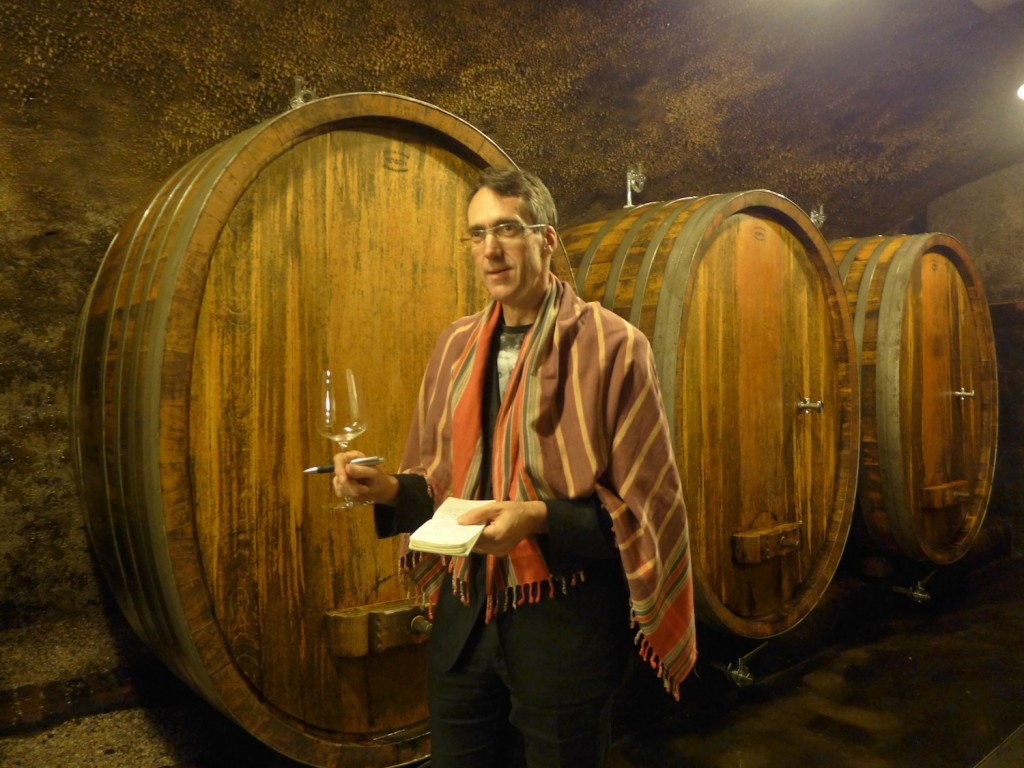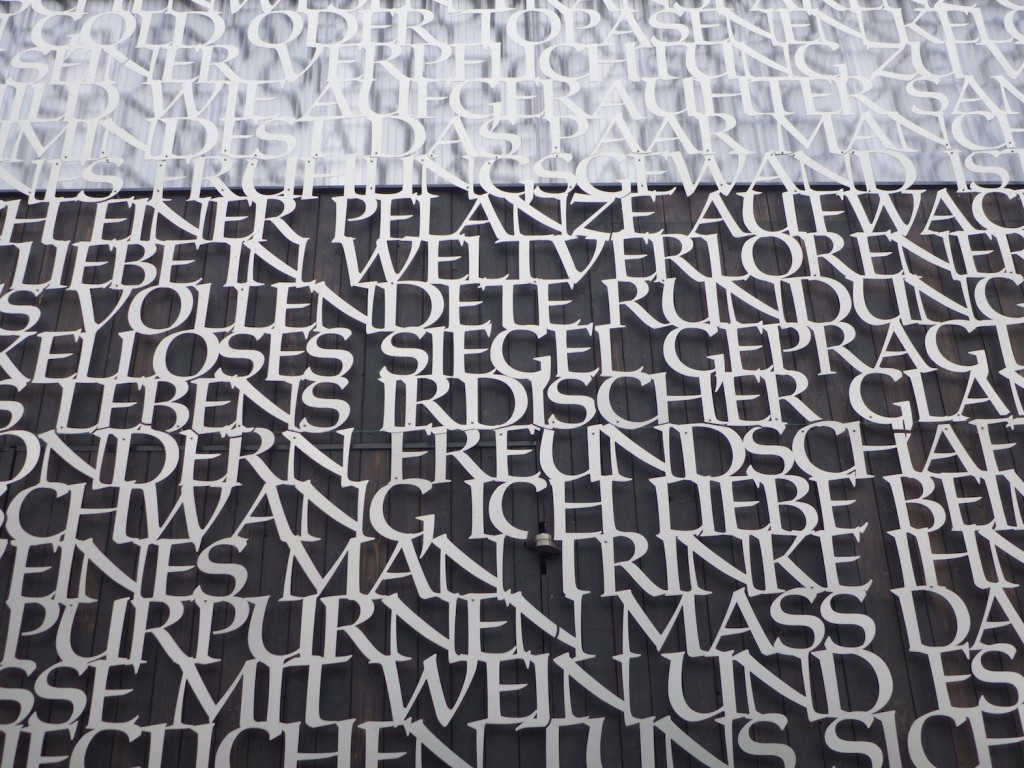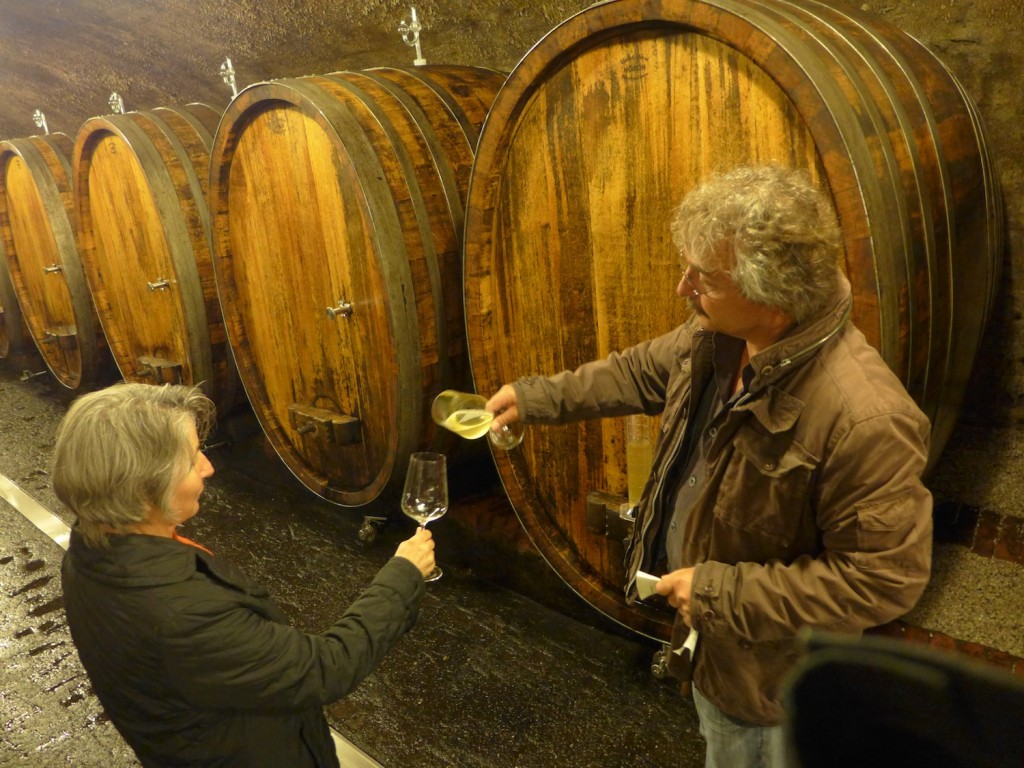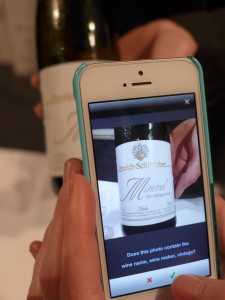 I’m just a humble citizen of Planet Wine and a Riesling Fellow Traveler who’s repeatedly damned to adopt the mantle of a prophet. OK, in this case that’s like me complaining that the forest is burning down after having been caught playing around with matches. It was I who picked that shawl out of the cloakroom at Heymann-Löwenstein in Winningen/ Terrassenmosel myself when Reinhard Löwenstein said that it was time to taste the young 2012s down in the cellar. Then of my own free will I answered Cornelia Heymann’s question as to whether she could use my camera in the affirmative and bingo I’m a Riesling Prophet again! And what does this Riesling Prophet have to say for himself? At first sight it looks like some kind of odd Germanic riddle.
I’m just a humble citizen of Planet Wine and a Riesling Fellow Traveler who’s repeatedly damned to adopt the mantle of a prophet. OK, in this case that’s like me complaining that the forest is burning down after having been caught playing around with matches. It was I who picked that shawl out of the cloakroom at Heymann-Löwenstein in Winningen/ Terrassenmosel myself when Reinhard Löwenstein said that it was time to taste the young 2012s down in the cellar. Then of my own free will I answered Cornelia Heymann’s question as to whether she could use my camera in the affirmative and bingo I’m a Riesling Prophet again! And what does this Riesling Prophet have to say for himself? At first sight it looks like some kind of odd Germanic riddle.
Pictured above is a complete section of the half-finished facade of the new cellar extension at Heymann-Löwenstein. The „background“ is a layer of charred wood, on which the German translation of the ‘Ode to Wine’ by Chilean poet Pablo Neruda (1904 – 1973) is written in stainless steel letters. For Reinhard Löwenstein the combination of these archaic and modern materials is as important as the optical effect. However, if you don’t know Neruda’s ‘Ode to Wine’, then I strongly recommend one of the most amazing poem about wine ever written. Here’s a good English translation:
http://www.poemhunter.com/poem/ode-to-wine/
If you open the doors of perception, then you can find all the images and ideas of Neruda’s poem in the Heymann-Löwenstein wines, so this is not as crazy a piece of wine architecture as it might seem at first glance. Chance brought me to the estate at exactly the right moment to taste the young 2012 wines, because the last of them had finished fermenting and been racked (separated from the heaviest lees, or dead yeast) ten days before I arrived, so they were in a really good state to gain a first impression.
They strike me as being the perfect realization of everything Cornelia Heymann and Reinhard Löwenstein (pictured below) have been doing since they founded what seemed like a very alternative winery back in 1980. It’s hard to believe now, but back then founding alternative wineries was really the last thing that was considered possible. They were really exploring the Outer Limits of the Previous Wine Epoch, as I call the period before daring and creativity became desirable in the world of wine and the possibilities seemed carved in stone by (a French wine) God. And of course, as has been repeatedly proven right around Planet Wine, that was complete bullshit!
The first Heymann-Löwenstein wines I encountered were the 1987 dry Rieslings, which was the vintage with which they switched to labeling the wines with the vineyard name printed most prominently and everything else small. That also seemed seriously revolutionary at the time. It was also a bitch of a vintage for dry wines, being on the thin and the sour sides, but the 1987 Heymann-Löweinstein wines were a revelation; harmonious and full of character. 2012 is an extremely good vintage, (in the hands of a good winegrower) at once ripe and intense, yet charming. The 2012s at Heymann-Löwenstein have all the spicy complexity of previous vintages married to a stunning brilliance. To drink them you’ll have to wait until at least September though.
Yesterday evening was the big party for the opening of the new cellar extension at the much more famous Weingut Robert Weil in Kiedrich/Rheingau. I decided not to photograph them due to the crowds, and because the estate’s website has much better photos than I could ever have done. To catch them go to:
http://www.weingut-robert-weil.com/index.php?id=142&L=2
The party was great fun, except for the fact that the “special” winetasting for journalists that (very long) lunchtime had half-rubbed me out. Why is it that at important events like this, it is always felt that without a bunch of Big Reds (in this case 15 of them) something vital is missing? I think the answer lies largely in the twin prejudices that those wines are the Right Stuff to drink with red meat (which isn’t necessarily the case, as can easily be showen) and that red meat is the Right Stuff for the “main” course. It often strikes me that this also has a macho element, as if the color of the red wine in a grey-haired man’s wine glass somehow emphasizes or even enhances his virility. And if that nonsense isn’t hanging in the air, then the well-known high prices certain Big Reds command are felt to enhance the sense of self-importance of the (generally male) drinker, even to give him a halo of sophistication through mere association. To my mind that’s just so much junk left over from the previous Wine Epoch, and actively detracts from wines like the rich, yet refined 2005 ‘Opus One’ in Napa Valley/California or the vibrantly youthful and seriously concentrated 2010 ‘Saffredi’ from La Pupille in the Marema/Tuscany.
Riesling was allowed a ghetto in the form of the first flight in the tasting, which many older wine professionals consider no more than a warming up lap of the track before the serious business of those Big Reds. That was a bit sad, because Wilhelm Weil and his team produce 100% Riesling including top wines in the dry style (his 2004 Gräfenberg Riesling Erstes Gewächs was included in the tasting) and sweet style (conspicuous by their total absence). Was it really more important to live up to the outdated expectations of the older wine professionals at the table, than to show that for which the Robert Weil estate has been famous for for more than a century? I can’t make any sense of that.
At the party, which like the tasting for the journalists was perfectly organized, a slew of excellent wines from members of the VDP association of top German producers were poured. None stood out more for me than that which this picture shows someone photographing, the dry 2012 Riesling ‘Mineral’ from Emrich-Schönleber of Monzingen/Nahe. It had everything including the refreshing quality of all lighter Rieslings. In spite of his critical and popular success Frank Schönleber is one of the most underrated young winemakers in Germany. He’s been making the wines at this estate since 2006 and has built upon the achievements of his father Werner in a remarkable way. ‘Mineral’ is one of his creations, and as the name says it really is an intensely mineral wine, in 2012 with every bit as much charm as depth. At once it was refreshing and the full fathom five of Riesling!




![120114_riesling_global_RZ [1600x1200]](http://www.stuartpigott.de/wp-content/uploads/2013/05/120114_riesling_global_RZ-1600x12004.jpg)